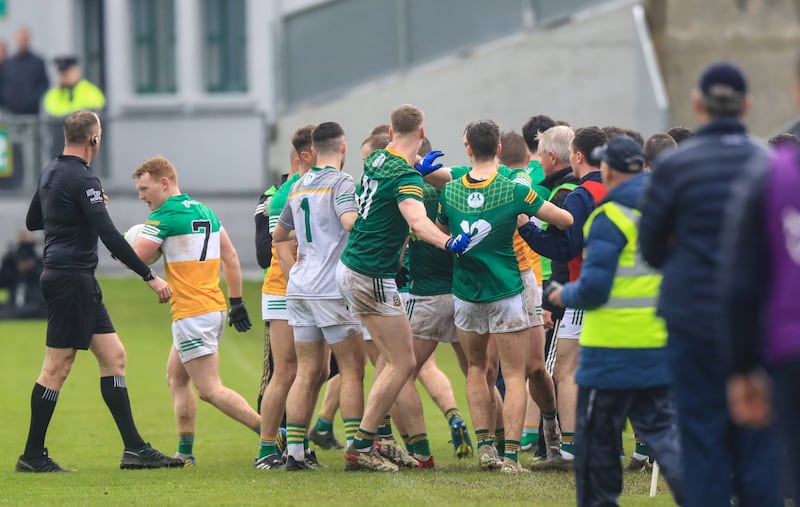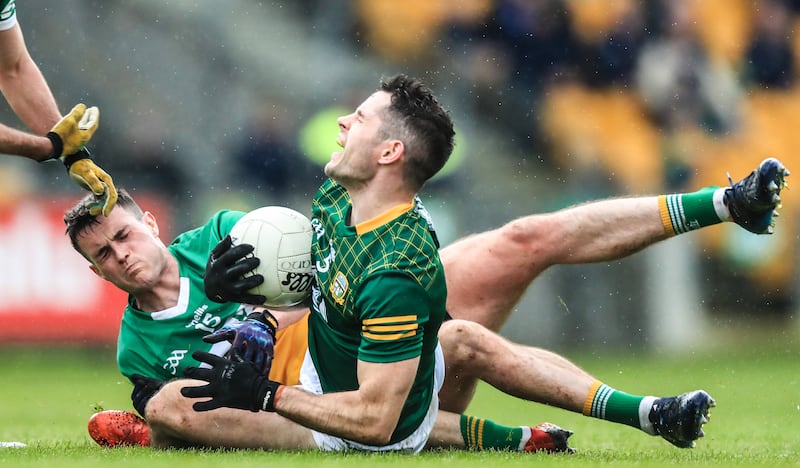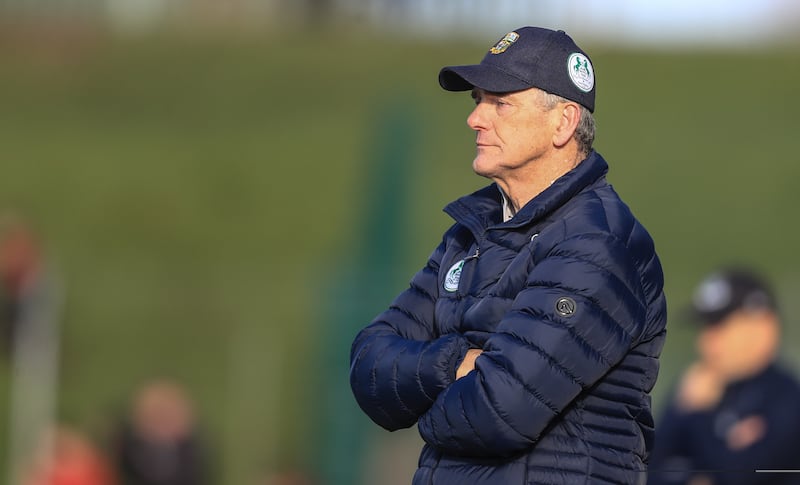On a mucky afternoon in December 2004, Meath senior football champions Skryne faced Portlaoise in a Leinster Club SFC final in Newbridge.
They lost by four points. It remains the last time a team from the county contested a provincial senior club football championship final.
Since 2014 the winners of the Meath championship have been eliminated from the Leinster club campaign by opponents from Westmeath (three times), Offaly (twice), Dublin (twice) and Longford (once).
The travails of the flagship county team are the visible manifestation of what is a systemic problem in Meath – the standard of club football in the county simply isn’t good enough.
READ MORE
Navan is the county town, and O’Mahonys is the main club. Last October, they were relegated to the intermediate grade for 2023. Not a single player from the club was on the Meath panel for Sunday’s game against Offaly.
Indeed, while the populations of Dunboyne, Dunshaughlin, Ashbourne, Ratoath and other Dublin border areas have swollen over the last 20 years, the county’s three traditional towns of Navan, Trim and Kells have also seen a growth. Yet from those three respective town clubs, only one player was on the Meath squad last Sunday.
Dunshaughlin, in 2002, are the last Meath side to win a Leinster club SFC. If your products are coming off an inferior conveyor belt, you’ll be caught out when you put your wares up against better supply lines.
Not that Meath should have any excuses. It is a county with a population of 220,296 according to the most recent Census and where Gaelic football remains the predominant sport. There has been a 12.9 per cent growth in population over the last six years.
Monaghan’s population is 64,832, Roscommon’s is 69,995. And while it might be trite to say those counties are maximising their resources, a kid with an abacus could tell you Meath is not delivering on its potential.

It is often mentioned that Meath’s last Leinster triumph was in 2010, and the manner of that win over Louth has always scarred it as a fairly hollow achievement. However, the malaise has been setting in for much longer.
Meath contested the All-Ireland final in 2001. From that day until today, the 2010 success is Meath’s only provincial title. That’s one debatable Leinster title in over two decades.
It wasn’t on Sunday in Tullamore that Meath were dumped into the secondary football championship, the reality is they haven’t been competitive in the traditional one for years.
Dublin’s long shadow continues to hang over Meath. Mayo lost more seminal games against the all-conquering Dublin teams than anybody else in recent times, but no county lost more during the rise of the Dubs than Meath.
With each double-digit hammering Dublin routinely inflicted on Meath, confidence was chipped away and bit by bit a disconnect between the team and the people grew.
Over the years, as Meath’s fortunes declined, a degree of indifference set in. There was almost a resignation to their reduced status in the new world order.
Colm O’Rourke’s appointment as manager was widely welcomed within the county. Perhaps he could help the Meath team figure out their identity again, rediscover what they stood for.
So, when Dublin arrived to Páirc Tailteann in March for their first league game against the Royals in Navan in over 30 years, the game was a sell-out.
Few Meath fans believed their side would win, but there was a sense this was an opportunity to finally stand their ground and hold the line. No more backward steps. Meath lost by 11 points.
Their meek resistance to Dublin that afternoon sucked the energy of hope away from Meath fans. And probably the players too, truth be told. They were no further on and, as a team, they looked completely unsure of their game plan. They were neither here nor there. Floundering.
And yet it is unfair to burden young, inexperienced players with the expectation of history. The young players lining out for Meath now don’t remember the medal-laden days of homecomings on the Fair Green. It was another time, a different era. But therein lies another problem – now there is no culture of winning.

To O’Rourke’s credit, he has tried to freshen up the dressingroom. Speaking in October at the launch of a regional tournament for junior and intermediate players, he remarked: “There is no point in going back and saying we are going to go with the same group again because it would be the definition of madness hoping that if you keep doing the same thing that it will work differently.”
There were always going to be bumps along the way, but O’Rourke probably couldn’t have imagined the road would have been this potholed so soon after leaving the garage.
There were only seven players who started against Offaly on Sunday from the team that lined out in Meath’s last championship game of 2022.
So, this is a new team he is trying to build and it is likely he will expand that again by giving game-time in the Tailteann Cup to near on half a dozen players from the under-20s.
But the graph of Meath’s form has to be a worry. They haven’t won a competitive game of football since February 5th – which was their second game of the league.
After two rounds – victories over Cork and Clare – there were noises being made about Meath returning to their old values of a kicking game.
The plaudits were all a bit cliched and most of that fanfare was coming from outside the county, from folk who had become disillusioned with the modern game and were hoping O’Rourke’s arrival would quickly change the landscape. It was an illusion.
The past lives only in memory, and you don’t win matches in 2023 playing football from 1988. And O’Rourke, while clearly trying to implement a more positive game, knows that as much as anybody.
Meath weren’t playing with wild abandon during the league, as some have suggested, they just couldn’t nail their defensive shape and hone a smooth transitional game. Coaching wise, a lot remains to be done with this group. There has also been a lack of aggression in Meath’s play for years now and they lack an X-factor forward.
Also, it is a dressingroom crying out for leaders and strong personalities. The absence of Conor McGill and Bryan Menton didn’t help matters, leaving the likes of Donal Keogan – the county’s gem in an era of dust – and Cillian O’Sullivan as the senior players challenged to drive the new recruits on.
This year’s under-20 side were highly regarded so last week’s loss to Dublin was a significant setback for a group many in the county hoped could challenge for All-Ireland honours.

Still, it is with that crop more than any where much of the hope is now invested.
O’Rourke has asked the Meath public to be patient with the new team he is trying to assemble, and whether it is comprehension of the challenge or merely indifference, there seems a willingness to give him that space, though whether or not he will have the appetite to plough on at the end of the season is perhaps another question.
As for the clubs, well there is a responsibility for all to raise coaching and playing standards. It has to start there.
How Meath fare in the Tailteann Cup now will have as much to do with the mentality around how they perceive it than anything else.
Meath don’t want to be there. It’s not where they ought to be. But it’s hard to argue that it’s not where they deserve to be right now.





















